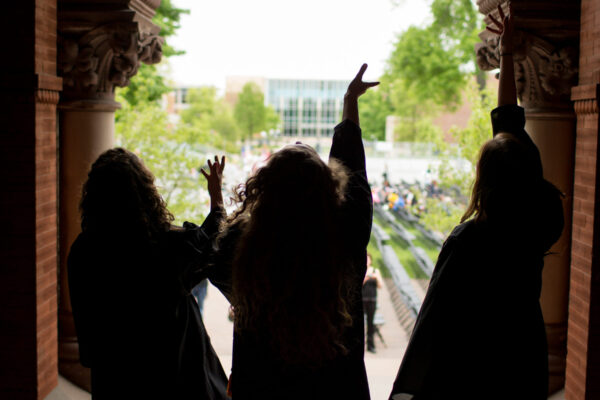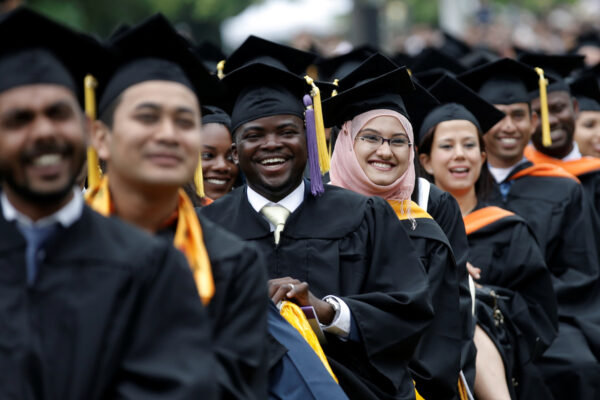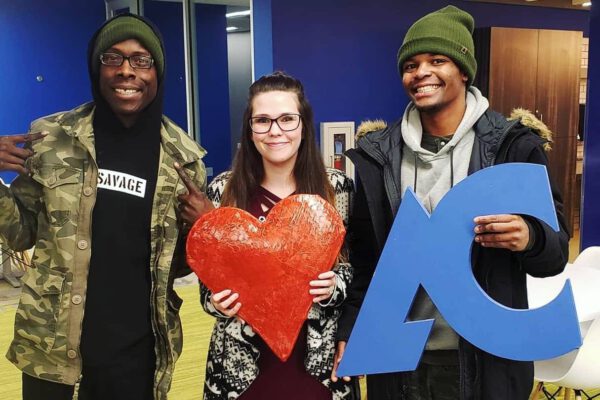By Johan E. Uvin
During my last year as acting assistant secretary at the U.S. Department of Education, I had the opportunity to visit College Unbound twice. The first time, I joined Lul Tesfai, my then colleague, and spent the night meeting students and participating in classes. Students shared their stories and their struggles in higher education before they got to College Unbound. I was both moved and inspired. The second time, I was invited to speak at commencement. As I was sitting on stage, I looked at the proud graduates and their families. Then, I noticed that one of the graduates had been an opportunity youth (someone ages 16–24 who is not in school or in training, not working, without a credential) who I had worked with 12 years earlier in Rhode Island. I greeted him afterward, and we talked. That is when I got sold on what College Unbound is all about.
Let me provide some context first.
Sixty percent of wealthy students in our country attain a bachelor’s or higher degree within eight years from high school completion. If you are a student in the middle class, that percentage drops to 29 percent. If you are a poor student, that percentage is further cut in half, to 14 percent (NCES 2015).
A growing number of college students are from low-income families. These students do not necessarily attend selective institutions, and many of them end up stopping out or dropping out. Thirty-seven million Americans start college and rack up some credits, but leave without a credential or degree and never finish. They have “some college, no degree,” meaning that they hold a high school diploma or equivalent and have completed one or more postsecondary courses that did not result in a degree or certificate. Low-income students are overrepresented in this group of early leavers.
Many explanations have been offered to shed light on why this happens. The lack of adequate state funding for postsecondary education is always high on the list. An equally important cause is simply that students are poor: They have no disposable income to finance their expensive tuitions and fees. They have to work. They have to pay their bills. This constant tension between choosing work versus choosing school is a reality. And the vast majority of our institutions of higher education appear to ignore this reality, provide no or inadequate support, or want to provide support but don’t know how within their own unique set of constraints. The performance of these institutions and the resulting outcomes for low-income students are far below optimal and will remain so as long as the prevalent models are in place because these models are not designed to accommodate these students and address their financial needs.
Part of the solution is that we need to rethink whether postsecondary education should be a public good or a private good. Given the demands of the economy, it would make economic sense to make the first two years of postsecondary education entirely free to students. We don’t have an issue with saying a public education through high school graduation is a public good because that made sense given the economic needs at that time. It is time to extend that public good to include at least two years of postsecondary education.
While this policy solution would go far, more needs to be done. Many of our institutions of higher education have college readiness expectations that quite a few students don’t meet. Our current system of developmental education places the burden of addressing lack of academic readiness on the individual students, but we know these interventions don’t work and, in fact, reduce the likelihood of graduation. What is needed is institutions that are ready for these students and can meet them where they are.
College Unbound is an institution that meets students where they are academically and financially. Most of its students have tried postsecondary education before but had to stop out. College Unbound focuses on adult learners who have faced significant barriers to attending college. It coordinates courses, field studies, and in-depth project work to help students develop field-specific knowledge and skills that encourage deep learning. College Unbound fills a unique niche in postsecondary education for returning adult learners with a bachelor’s degree completion program designed around an innovative, personalized, interest/project-based curriculum model. It further provides the integrated support services that returning adult learners may need, including assistance with restoring financial aid eligibility and other support services.
Not even a decade old, College Unbound is likely going to be one of the few innovation breakthroughs in higher education. The reason is simple. The approach seems to work. They understand the adult learner, and they have early data to prove it. The completion rate for low-income adult learners at College Unbound is 88 percent for the first cohort and 87 percent for the second cohort. That is six times the 14 percent of poor students nationally who attain a bachelor’s or higher degree within eight years from high school completion
If you have any questions or comments about this blog post, please contact us.


